2018.07.12News
[Seminar Report] Mainichi Media Café CSR Seminar Bringing Light to People
2014.07.21 News
Besides the 100 Thousand Solar Lanterns Project, Panasonic is dedicated to solving issues in off-grid areas in other ways as well. One example is the use of official development assistance (ODA) to spread the use of what we call the Power Supply Container, a stand-alone power unit that combines a photovoltaic panel with a battery and energy management system. We spoke with company representative Susumu Iida regarding a project to install a unit to an elementary school on a remote island in Indonesia.
I am Susumu Iida, from the Panasonic Corporation Eco Solutions Company. On July 17, 2014, we held a presentation ceremony for the installation of the Power Supply Container at the National Elementary School Karimunjawa 01 on the island of Karimunjawa, located east of Indonesia's capital, Jakarta.
The day of the ceremony was a festive one attended by the school's 168 students and teachers, other guests including the governor of Jepara District, the minister at the Embassy of Japan in Indonesia.
"Computers make it fun and easier to learn!"
"It's so nice and cool to have a fan. Now I can really study!"
The children were delighted when the Power Supply Container first brought electricity to their school.
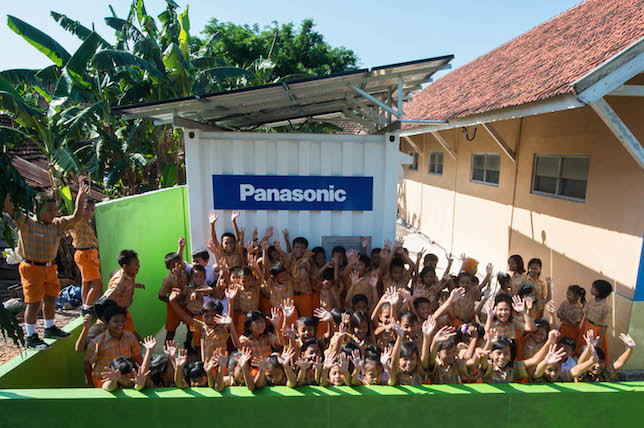
Indonesia consists of approximately 13,000 islands, many of which lack access to electricity due to the difficulty building large power plants and running power lines in the distinctive geography. We chose Karimunjawa Island as the recipient of our installation with the hope that Power Supply Container, easy to set up and transport, would make life better for the people living there.
Karimunjawa Island is about two hours from by speed boat port town Jepara in Central Jawa, and is home to about 8,800 people and 2,500 to 3,000 households. Until now, electricity was provided only in the evening by a diesel-powered generator, and the lack of electricity during the day had caused various issues for its residents.
Among those issues was the children's poor learning environment, compared to that of other villages in the same province. Without electric lights, classrooms were dark during rainy season. Without electricity, the ceiling fans could not be used. The children could not concentrate on their studies in the hot and gloomy classrooms. Additionally, they did not have the benefit of learning with multimedia devices like computers, projectors, and audio equipment that children in areas with electricity have access to. Teachers were also discouraged that the region's academic performance was the lowest in the province, partly due to the lack of teaching resources.
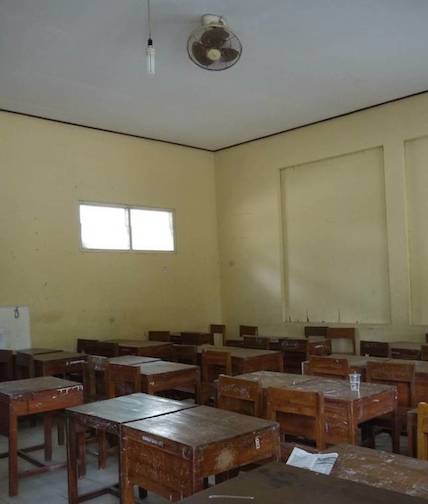
The ceiling fans were left unused due to the lack of electricity during the day.
We chose an elementary school as our recipient out of our desire to provide equal learning environments for the sake of the children's future.
Classes go from around 7 a.m. to noon on school days. With the Power Supply Container, the school will have electricity for lights and fans. The additional installation of computers and other equipment will also help improve class learning quality. We hope that these things will improve learning efficiency significantly.
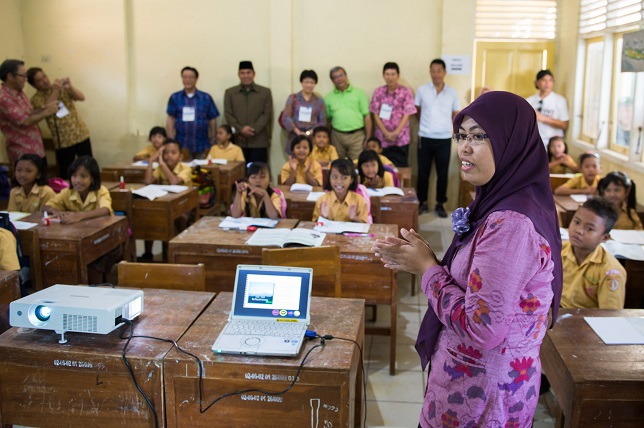
With electricity from the Power Supply Container, the classroom was lit up and the ceiling fan started. Children are so interested in learning with multimedia devices for the first time.
This initiative has been chosen as a joint public-private sector project using Japanese ODA Grant Assistance for Grassroots Human Security Projects (GGP). Because the project term is just one year, we also sought cooperation from an NGO named IBEKA, which help communities develop through introduction of renewable energy. In these ways, we are creating a sustainable system that will continue to serve the people of the community, instead of ending with just the installation of equipment.
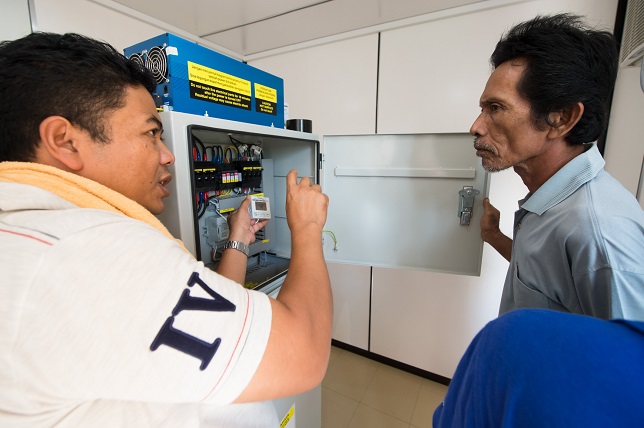
For a sustainable operation of the Power Supply Container, the local people take charge of maintenance of the container.
Specifically, arrangements were made to sell the surplus electricity, generated when class is not in session, to nearby food stalls and the local community. The revenues provide the funds necessary for battery replacement and other maintenance costs of the container. Basic operation has been contracted to an electricity management cooperative established by the local people.
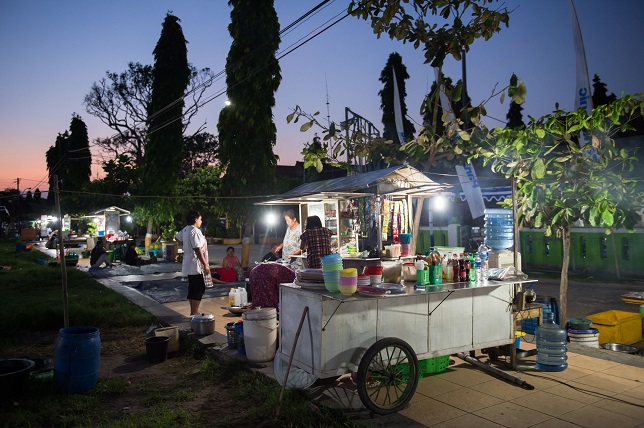
Food stalls on the nearby street. Surplus electricity will be sold to them for raising funds for the maintenance of the container.
Our first step for the Power Supply Container was this operation on Karimunjawa Island. As we build experience, we hope to expand to other regions. We are sure of product quality since the units must pass inspections at the factory before being shipped, and we provide support so that people can use them with confidence in core community functions, government facilities, and stores.
This installation is just a first step to support a better life for people in remote areas without electricity, and we are committed to doing more in the future.
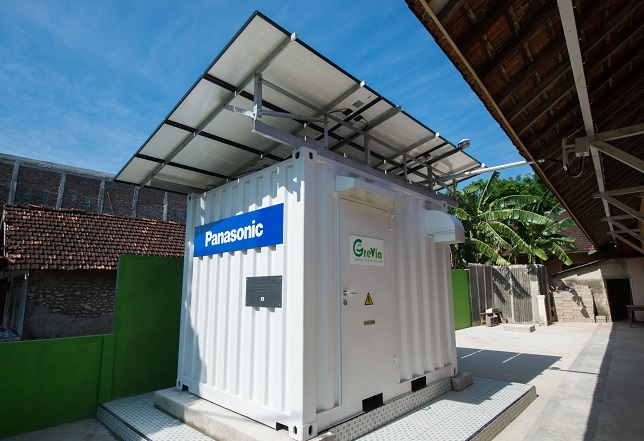
*Click here for details on the Power Supply Container.
|
Susumu Iida |